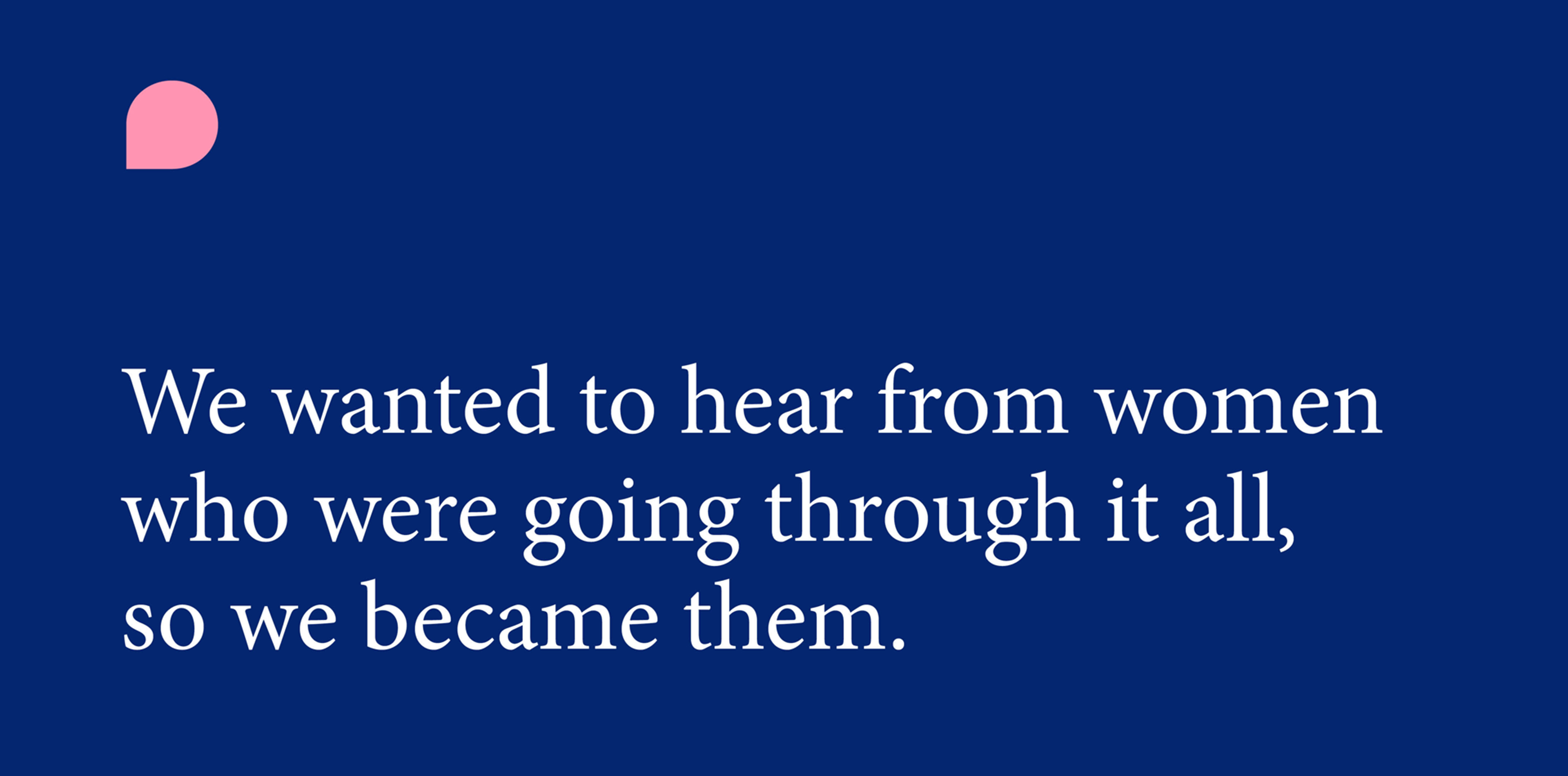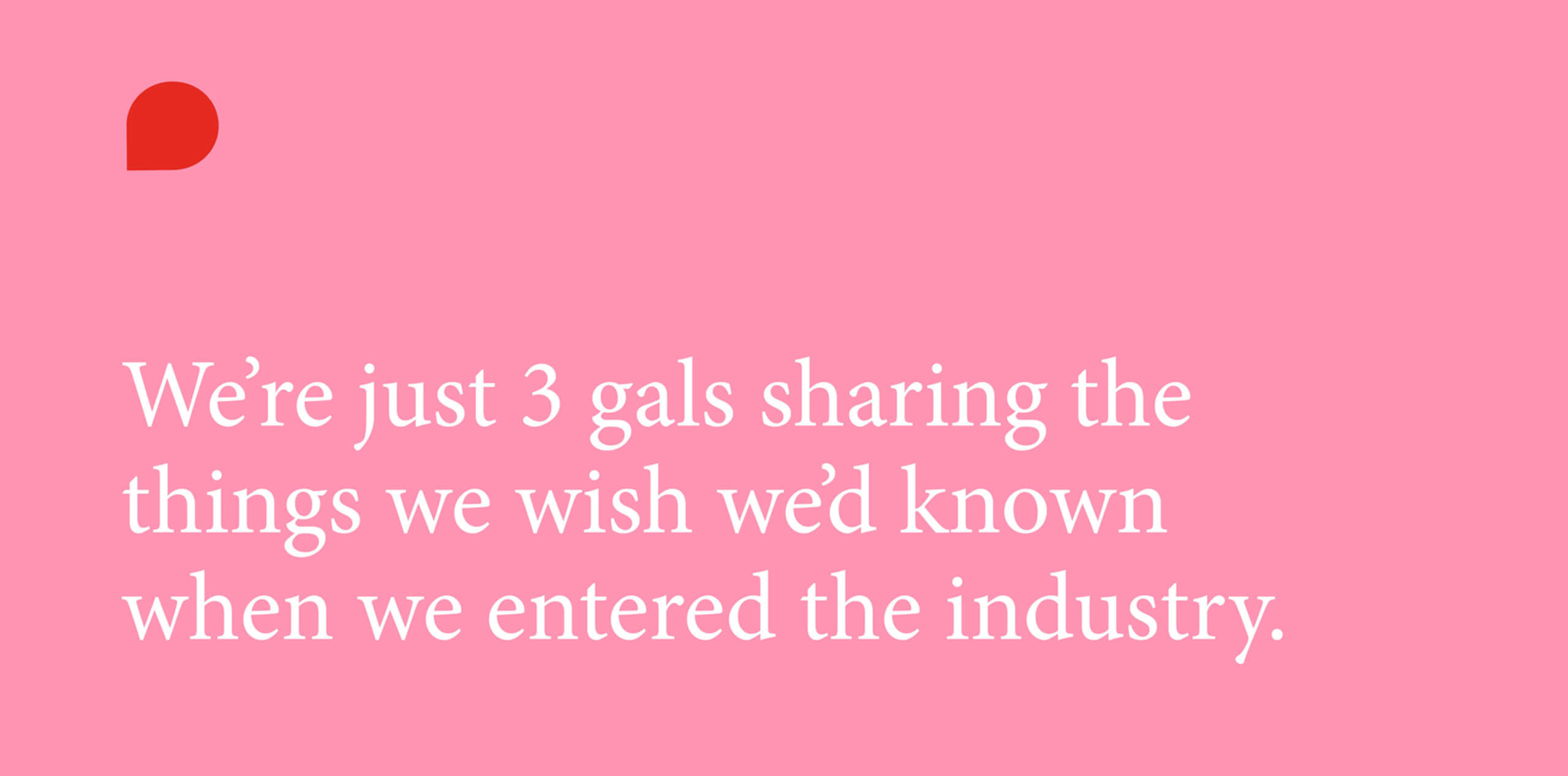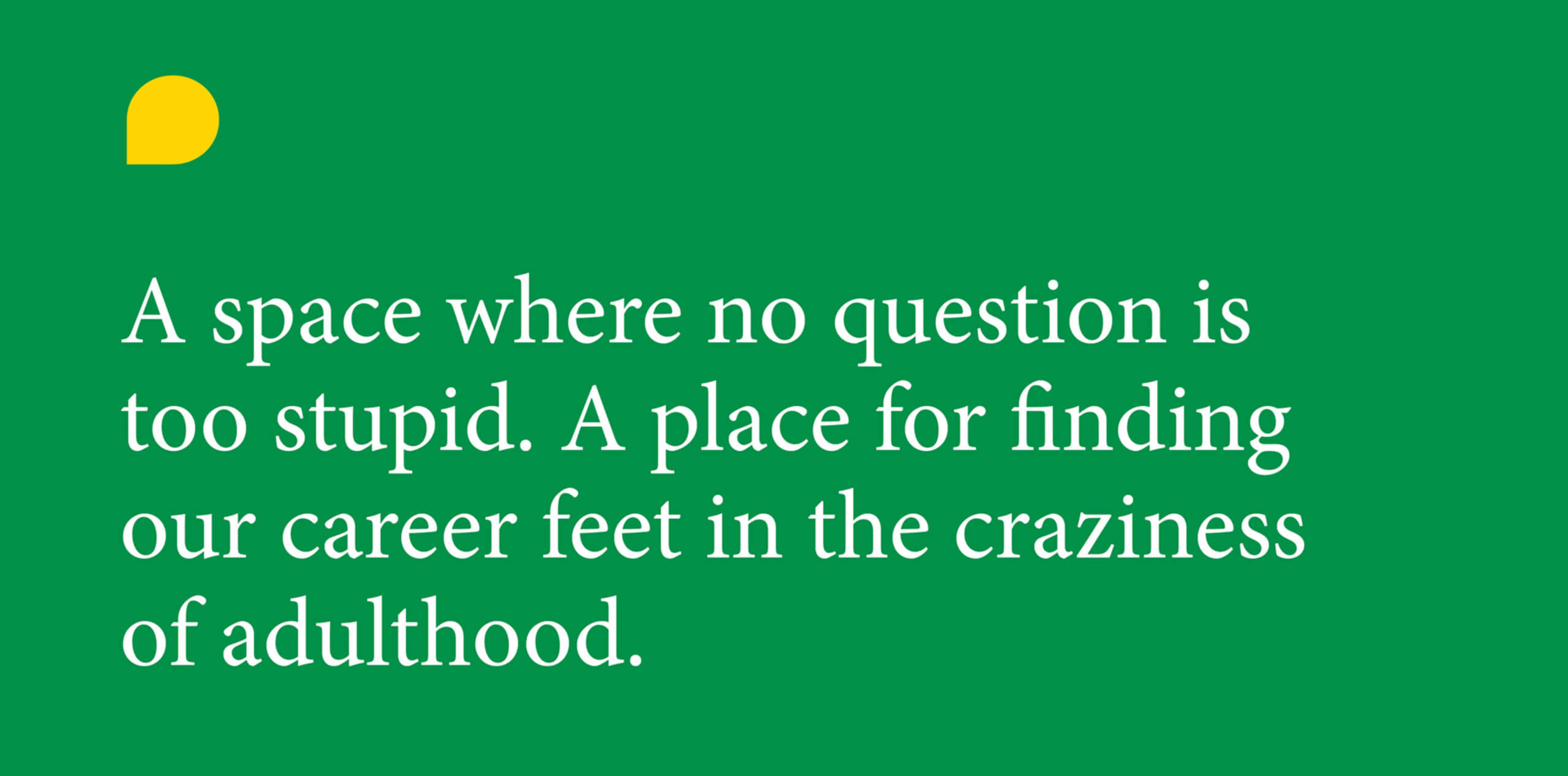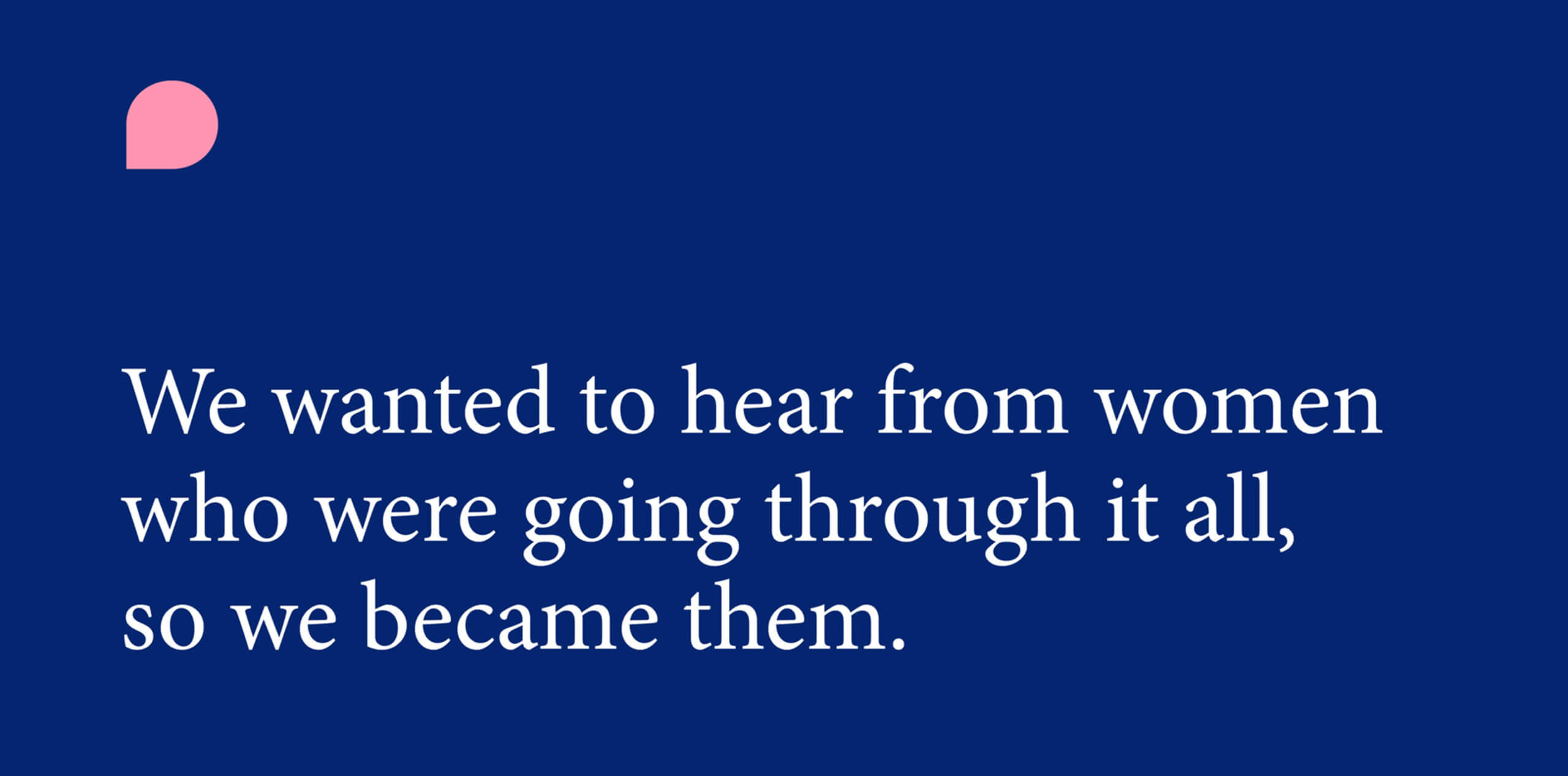We Are Outspoken are a group of three like-minded young female creatives, currently trying to figure out where they fit in the design industry. Based in the Midlands (UK) Emily, Bethan and Charlotte all met through working together for leading advertising agency McCann and found that they share a common purpose as creatives who are early on their careers. They believe that although hearing from really successful women, who have established careers is inspirational, sometimes you need to, “hear from someone who’s more on your level that you can relate to.” And felt that they weren’t, “hearing enough from people right at the start of their careers and in the thick of it.”
All three are inspirational young female creatives and their talent was picked up on early in their careers. Bethan studied Creative Advertising at Falmouth University where she discovered that copy writing is her passion. She exhibited at the New Blood grad show and won a D&AD New Blood Pencil award. Charlotte discovered at university that she really enjoyed the problem solving and behavioral psychology of art direction in advertising. She won a week’s placement with an agency in her second year at uni, which eventually led to a permanent job as an Art Director. Emily was working as a volunteer at the Birmingham Design Festival where she caught the attention of three creatives from McCann and ended up being offered a job as a Junior Designer.
Although Emily, Bethan and Charlotte, acknowledge the sense of community in the design industry and value the support they have received, they’ve all experienced sexism and feel that diversity remains a huge issue: “the average designer is still a young white male.” Although there is a lot of talk about equal opportunities, they believe there’s not enough action with regard to flexible hours and equal pay, particularly as this can have an impact on junior creatives just starting their careers. Through We Are Outspoken they want “to give a voice to those who don’t usually get to use theirs.” And have created a platform to share support and advice to students, new graduates and other young designers at the beginning of their careers.
Recently they’ve given a talk for Forward BCU Graphics 2020 graduate show called: “The Good, the Bad and the Ugly” with useful tips and advice for new and recent graduates. And also collaborate with the Birmingham-based group Women Unltd launching the podcast series Unfiltered which is well worth a listen and aims to, “shine a light on the honest truth about being a woman in the creative and marketing industries.”

We chatted with Emily, Charlotte and Bethan to find out more about their careers so far and why they decided to set up this amazing platform.
How did you first become interested in working as a copy writer / designer /art director?
Bethan: I’ve always been fascinated by adverts. I always thought it was a medium with a lot of untapped potential. Advertising is an opportunity for brands to invent new things, cause real change and shift attitudes. When I was younger, I desperately wanted to be a graphic designer. So, when I applied for an art foundation course rather than uni and didn’t get in, I had a slight panic. It was actually the best thing that’s ever happened to me, because I realised: a) the things about design that interested me were the advertising elements, and b) I was a terrible designer. So, I studied Creative Advertising at Falmouth University instead and fell in love with copywriting.
Emily: Being a designer is something I’ve always wanted to do, as clichéd as that sounds! I got a little lost along the way through university, trying to figure out what my ‘specialism’ was. There are so many avenues to explore, and it’s easy to get influenced by what other people are doing instead of sticking to your own path. But one day it all fell into place, and I realised editorial design was what I wanted to pursue. I’ve always had a love for magazines; I remember looking through Teen Vogue when I was younger and thinking “this is what I want to do one day”.
Charlotte: I had no idea what art direction even was until I went to university. At college I thought I wanted to study Law and nearly didn’t take Graphic Design at all. But I’ve always been ‘arty’. My grandparents taught me to draw and paint, and I used to spend my spare time at school creating conceptual photographs. On the Visual Communication course at uni I discovered what I really liked was coming up with ideas, and the problem-solving and behavioural psychology aspect of advertising. The great thing about being an art director is you get to use so many skills, and work with so many brilliant people.
Describe your career path of how you got to where you are now.
Bethan: After uni I decided to move from Cornwall to London. It seemed like the right thing to do, and I had a placement lined up there. I went to London as a solo writer and was fortunate enough to win a D&AD New Blood “Pencil” and exhibit at the New Blood grad show. I met someone there who was looking for a writer to pair with an AD they’d already hired at an experiential agency and I interviewed for the internship. I wasn’t successful, but I was one of the top two candidates. I was gutted. But then, plot twist! I got called back by that same agency who said the other candidate had turned the internship down and did I want it? Er hell yes, I wanted it. That internship turned into a full-time position and I worked there for a year. As my rental lease drew to a close, I realised London wasn’t working for me. I was lonely, it was expensive, and my flat was the size of a box. My partner was in the Midlands, living in a normal-sized flat, so I decided to move. I reached out to some places in that area and got offered a book crit at a lovely agency. Although they didn’t have a role for me, they kindly sent my book to someone at McCann. I then got an email from McCann inviting me in to say hello. After going for a chat, I was offered a job and started 3 weeks later. I’ve now been there for over a year.
Emily: My career path is still a very short one, having only graduated 2 years ago. I was extremely lucky in landing my job as a junior designer, and it certainly wasn’t your typical hiring scenario. In 2018 I was volunteering at the first Birmingham Design Festival, where one of the main sponsors, McCann Birmingham, were running an initiative where you had to do a 130 second pitch in the back of a van (it’s not as dodgy as it sounds, promise), to three of the creatives at McCann, and at the end of the weekend the person that impressed them the most was offered a job. I think there were about fifty people that took part, and it never even crossed my mind that I’d win, so it came as such a surprise. It was a really great experience and I’m so grateful for it (and grateful to my friends for making me do the pitch!). At the time it was so scary, but I’m now such good friends with those three creatives – Charlotte being one of them!
Charlotte: I entered a regional creative competition during my second year of uni and managed to win a week’s placement with an agency. After my placement week was over the Head of the Creative Department asked if I wanted to come back the following week, and after that I just kept going back. I spent the whole summer of my second year working at that placement, learning loads. More than I was learning at uni. I really threw myself into it. Eventually the agency offered me a permanent job when I graduated, teaming me up with a copywriter who already worked there. It was such a wonderful start to my career and all of the people there were so supportive. I was fortunate to have a great mentor in one of the senior Art Directors there. When my creative partner left, a copywriter at a different agency reached out to me, and I moved to a new job. We’re still working together now, and hopefully will continue to move through our careers together.
How has being a woman impacted your career?
Bethan: When I entered the industry, I was pretty naïve. I’d gone from an equal gender split at university to a space where I was often the only woman in the room. That’s been quite a shock and not something I’ve always found easy. Problems range from the big – missing out on opportunities and recognition – to the seemingly small, such as eye contact. I don’t think most people even realised they were offensive. Also, as much as you don’t want it to, there’s always a doubt in your mind that you’ve been given opportunities because you’re a woman. It’s been implied a few times already in my very short career and it does make you doubt yourself. Whenever I think that though I tell myself off. There are also benefits to being a woman in this industry. I have met some incredible women and formed some fabulous networks, because you can relate to exactly the same stuff. There’s been a huge sense of community which I love being a part of.
Emily: As I’m so early into my career, I haven’t experienced any major negatives or positives as such, but sometimes just being a woman in this industry can put you at a disadvantage, or can even make you feel uncomfortable. Whether that’s because people think you’re too sensitive, not aggressive enough, or you haven’t got a thick enough skin. I think it’s important to remember though that being yourself is not a weakness, and you shouldn’t have to change your personality in order to fit the industry. The point of having a diverse team, is to take into account everyone’s views and opinions, to create really amazing, unique work – how boring would it be otherwise?!
Charlotte: I’ve had a few eye-roll-inducing comments over the years from men who were more senior than me. And I’ve noticed a lot that people come to me rather than asking my creative partner or instead of asking both of us when they want something, presumably because they think I’ll be more agreeable or easier to persuade than him. There have been instances where I’ve been included in meetings or in photographs purely because I’m a woman – to ‘balance things out’. That can be difficult to navigate. But it’s also positive, through the experiences and viewpoints I can bring to projects.
Recently, there has been lots of discussion in the industry around the gender pay gap and how few women progress into senior positions. Have you experienced this yourself and do you have any thoughts on how we can counteract this imbalance?
Bethan: I think that something that’s overlooked at the moment is the experience of women entering the industry. I think that in order to stop women leaving advertising, you have to start there. First impressions count, and if you feel unwelcome it’s so easy to give up. I’d love to see more training and support for women who are junior and midweight. I’ve seen lots of schemes in place to help senior women become leaders, and that’s amazing. But we need to introduce things like this earlier because people leave before ever reaching that point.
The pay gap is an important thing too and I think a great way we can counter this is through greater pay transparency. If your company doesn’t publish the stats, ask people you’re close to. And ask people from other agencies what they’re paid. We often feel uncomfortable talking about money but it’s a valuable tool in making sure you’re being treated fairly.
Emily: Managers, Creative Directors and CEOs need to listen to what junior female creatives and designers want, and how we want to get there. More open conversations should be being had within internal teams, about equal pay, flexible hours and promotions. I think agencies are becoming more aware of what they need to do, but it’s such a slow process which makes it a little frustrating at times. Often, it’s senior males making all the decisions for us, whereas I think they need to actually talk to those who it effects, to get a better understanding of how they can change the system.
Charlotte: I have seen pay disparity between what I earn and what a male counterpart is earning, yes. And regarding seeing women in leadership roles, it’s something that’s been widely discussed over the past few years, but I’d just like to see less talking and more doing. Rather than talking about pathways for female leaders, why not just… promote them! Hire them! Create them! This is a frustration that’s especially relevant at the moment when agencies are also thinking about diversity and the lack thereof. There’s a lot of talk and not much action follows. I hope in 5 years, even 2 year’s time the landscape of the industry looks very different.
Also, I think the point Bethan’s raised about support before you reach seniority and leadership is so important. How can women become leaders if they’re all leaving the industry before they’re anywhere near that point? How can Black women become leaders if they’re not even being invited into the industry at the beginning of their careers? There’s imbalance at every level of experience.
In your experience, do you think there is equality and diversity across the design industry today?
Bethan: No, unfortunately not. Advertising has a huge diversity issue. There’s a huge cycle of the people at the top only hiring people that look like them. I think we need to work actively against that. Because it doesn’t benefit anyone. It also limits the work. If the people coming up with the ideas are basing it off the same limited set of life experiences, it’s not going to resonate with the majority of people who exist outside of that group.
Emily: In short, no. As women I feel we are very outnumbered, and we should be doing as much as we can to build each other up and give each other the confidence to speak out about the inequalities. I follow so many incredible female designers, creative directors, copywriters, on social media, but I would love to see more of that in my day-to-day job, rather than through twitter.
Charlotte: No, I don’t think there is either. As we’ve previously mentioned, there’s so much talk about this topic and yet it’s still the case that the average designer is a young white male. Kathryn Ellis has researched this topic quite extensively in her thesis, The Lost Girls, which looks at the disparity between the number of women in creative education compared to the number of women actually working in the industry, and why they leave or don’t make it in the first place. Hopefully, we’ll see this change in the coming years.
How did you all meet and what made you decide to set up We Are Outspoken?
We met working for the same company. We all had slightly different experiences before working there, but what united us was the fact that in some form or another, we’d all experienced sexism. It gets tiring very fast working in an environment that doesn’t seem designed for you. We decided instead of just talking about everything over a lunch break, we’d put our energy into something productive. We also realised how lucky we were to have each other through this process and worried for women who didn’t have that kind of support system. That’s why we wanted to set up We Are Outspoken. To create a space where young creatives (specifically women) who were new to the industry, could talk openly about their experiences.
We also wanted to start it now, specifically while we are still early on in our careers because you often hear only from the few women at the top. And while their experience is incredibly valuable, it’s hard to condense years of overcoming obstacles and strategies into manageable pieces. You also forget the nitty gritty stuff I think, like the sheer volume of emails you needed to send in order to get your foot in the door, or the advice you were given. And sometimes those super successful role models seem like a world away from where we are now. We want to bridge that gap and help women like us, who are just starting out and muddling their way through.
What are the aims and objectives of your platform We Are Outspoken?
We want to give a voice to those who don’t usually get to use theirs. Which, more often than not, is women. And a huge range of women from all aspects of the industry. Not just the women who’ve made it, but the ones going through it now. Documenting the journey. We want to start interesting debates and raise important questions. The most important thing though is we want to offer a support system for the women that need it. A place where students, juniors and midweight creatives can go and not have to worry about impressing anyone.
How did the Unfiltered podcast come about?
Quite by chance! We knew we wanted to do a podcast (I once saw a tweet which was like podcasts are the millennial version of starting a band which I still find hilarious!) And then we met Women Unltd at an event and they mentioned they wanted to launch one as well, so we thought we’d team up.
Do you have any words of advice for female graduates starting a career in design today?
I think the main one would be to stay true to yourself. If something doesn’t sit right with you, or makes you feel uncomfortable, don’t ignore it just to fit in. You might see certain types of people and leadership styles reach the top, but that doesn’t mean you need to follow suit. If the environment doesn’t work for you, change the environment, not yourself. That’s what we’re trying to do now, so join forces with us!
Can you recommend other female creatives currently working in the industry who you find inspiring!
- Natasha Thomas – She’s a fabulous designer working at George P. Johnson.
- Rinnah Chua – An amazing art director/illustrator/creative.
- Lauren Ashton and Gabby Cork – A badass Creative Team at Iris.
- Rosie Dale – A super talented photographer.
- Helaina Thomas – She’s a kickass entrepreneur who founded Tucca Swim straight out of uni.
- Writer, Strategist and Creative Jennifer Chang. If you haven’t read her deck about WAP deck about Women Asserting Power, you should.
- Set Designer and Art Director Sophie Leng. I adore her style. I want a print of every piece of her work in my flat.
- Visual artist Sabrena Khadija. She’s got a unique style that stands out and I really love the colours she uses.
- Veronica Fuerta founder of Hey Studio – I’m a massive fan of, and I had the pleasure of meeting her at last year’s Birmingham Design Festival, after designing an article in 99 Percent Lifestyle magazine that featured Veronica. I’m dying to go to the Hey shop in Barcelona!
- Hattie Newman’s – paperwork was a really big inspiration to me through university, and while I don’t get to be as experimental with paper in my day-to-day job I still love seeing her creations fill up my insta feed.
- Gail Bichler – while she’s based in New York, I love her work for The New York Times Magazine. The ‘Behind the Cover’ videos on Twitter with Jake Silverstein are brilliant – it’s so lovely to see a snippet of the process that goes on behind the making of their amazing covers. It’s really refreshing to see some of the journey, often you’re just shown the finished article, so I’m a big fan of this.
- Jade Purple Brown – is an incredible illustrator, who also earlier this year published a book called Words To Live By. She uses such beautiful colours in her illustrations – you can’t help but feel happy when looking at her work!



